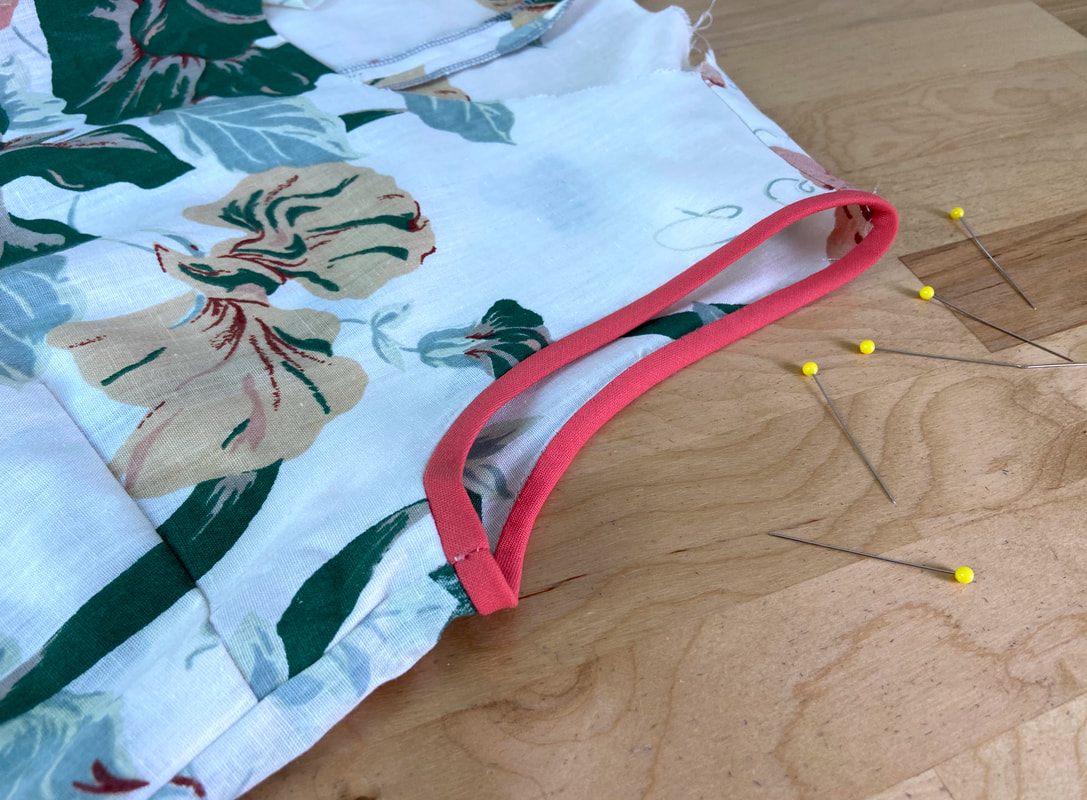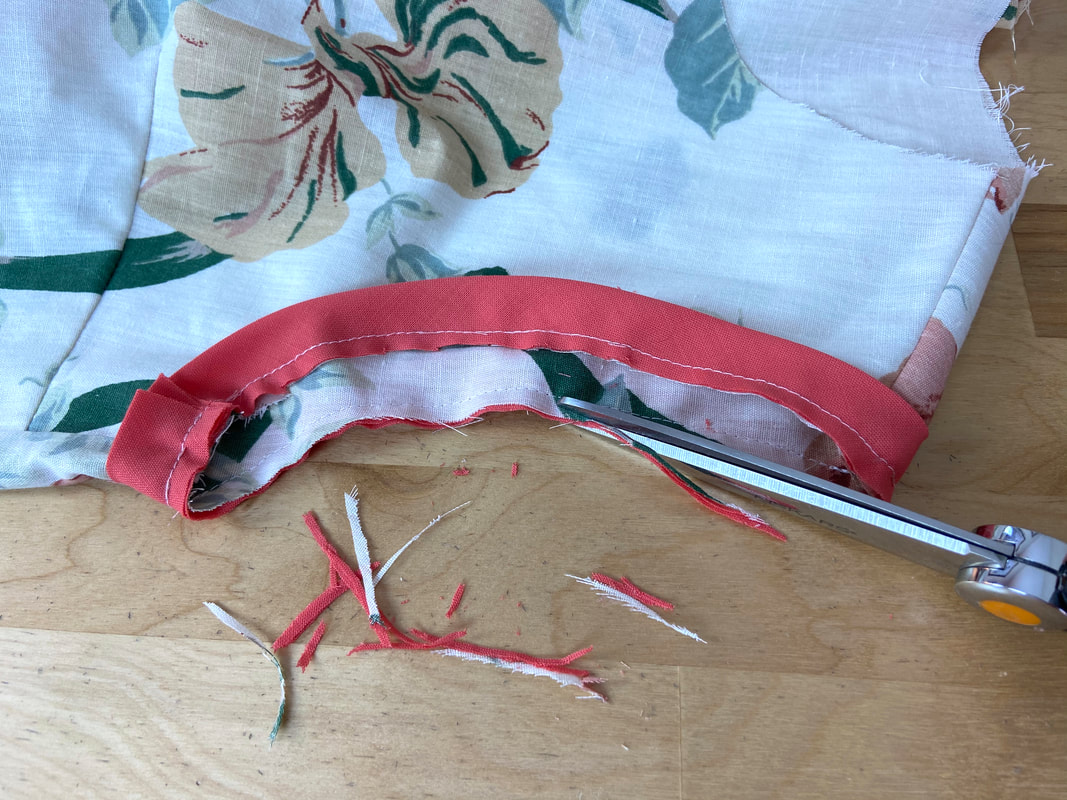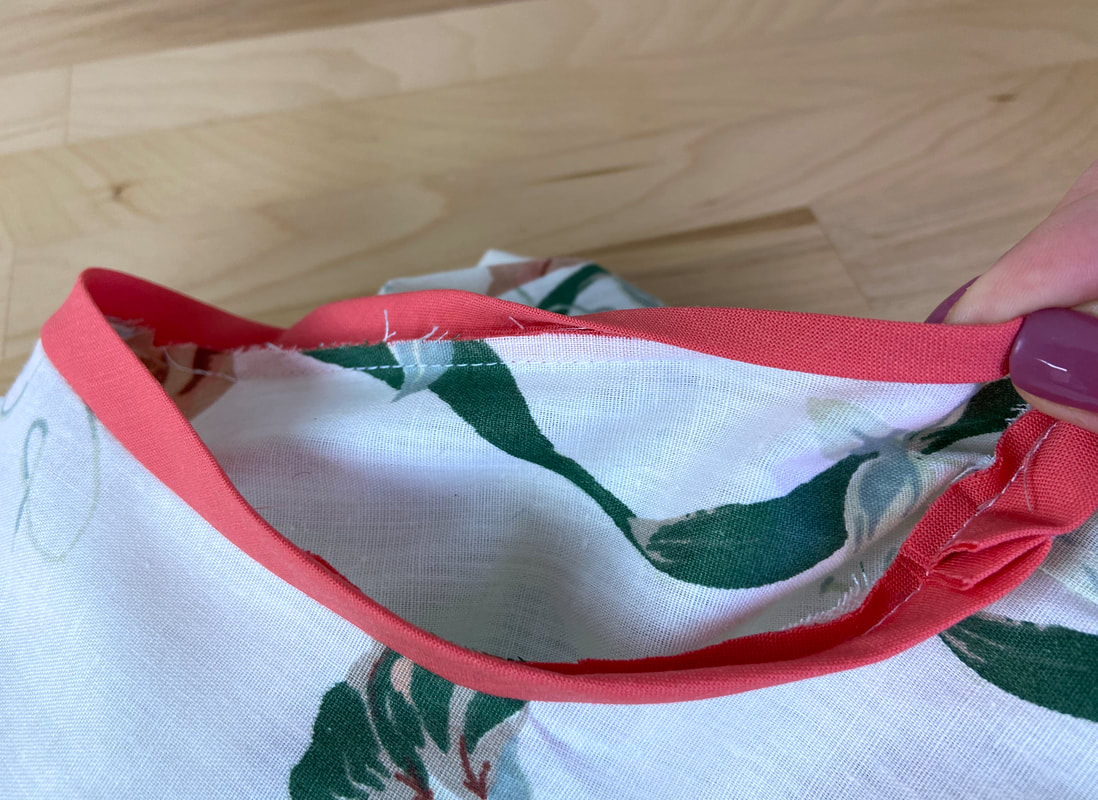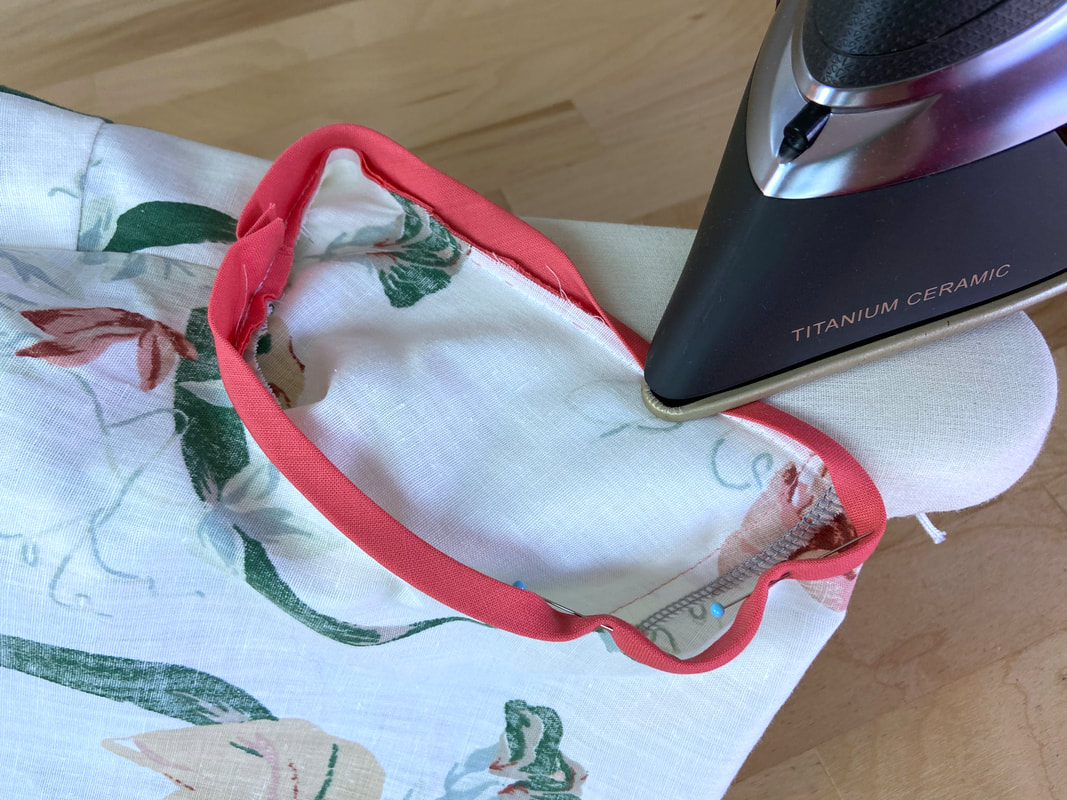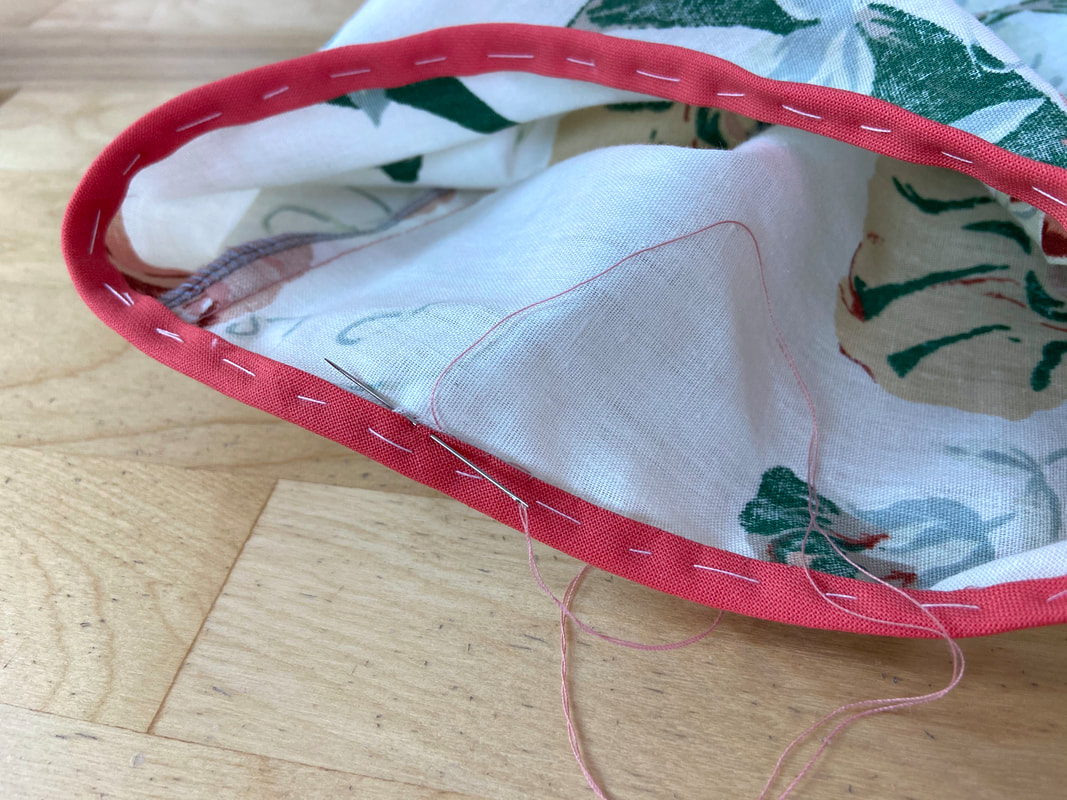A bound armhole application is identical in construction and appearance to a bound neck finish. The same bias binding is used for both the armhole and neckline applications.
Bias binding comes in a few different folding styles, and a multitude of colors and fabrics. It can be store-bought or made at home, the latter offering a lot more color and fabric possibilities.
There are three conventional bias binding styles you should know: single layer binding, double layer binding, and pre-folded binding.
When given the choice, you should go for the option that first, works best for your fabric and garment design, and secondly, is easiest for you to sew.
Keep in mind that although identical in construction to the bound neckline application, the armhole edge is abruptly curved at the underarm and thus trickier to work with. Careful alignment and hand basting are essential, especially if you are at the beginning stages of learning how to sew.
In the example below, the armscye is finished with a double layer binding in an exposed style. A double layer binding is pre-folded down the center prior to being stitched to the armhole edge (in this folded position).
As you’ll see in the sewing steps below, this binding style allows you to skip an extra folding step while also providing more stability during the application process.
If working with either single or double-layer binding, you have to measure and cut your own bias binding at home. Don’t worry, this is fairly simple to do if you follow the steps in this tutorial: How To Sew Continuous Bias Binding
With a double layer binding, the initial bias fabric strip is cut at six (6) times the width of the finished binding. For example, in this tutorial, the finished exposed binding is ¼” wide, thus the initial fabric strip will be cut at a total width of 1.5” (1/4” x 6).
For best results, the binding fabric should match that of the garment. If a contrast look is desired, choose a fabric that is similar in weight and thickness. A heavier binding will weigh down the armhole edges causing bulk and tension issues. Vice versa, a binding that is too thin will not be able to efficiently enclose the armhole edges, or withstand the garment’s thickness and structure.
A very important note on seam allowance: When exposed binding is used to finish a fabric edge, such as the neckline or armhole, this fabric edge should not have any seam allowance. In an exposed binding application, the binding simply wraps around the fabric edge to clean finish it.
On the contrary, if the binding is folded under in a non-exposed style, the corresponding edge should have a seam allowance that measures the same as the finished binding width. The added seam allowance accommodates the binding’s final fold toward the inside of the garment.
Sewing An Exposed Bound Armhole Finish With Double Layer Binding
1. Start by cutting and preparing the bias fabric strip.
As noted above, the total width of the initial bias strip in this example is 1.5”. Measure, mark and cut the 1.5” fabric strip on the bias grain. For more guidance on the process, follow the steps in this tutorial: How To Sew Continuous Bias Binding
You can cut two individual strips to cover the length of each armhole or make continuous bias binding as described in the tutorial noted above.
2. Fold the bias fabric strip lengthwise down the center such that the fabric wrong sides are touching and the lengthwise edges align. The right side of the fabric should be on the outside of the fold. Iron the bias binding in this position as shown. Apply steam as needed to crease the center line.
3. Before sewing the binding to the armhole edge, make sure both the shoulder seams and side seams are stitched, clean-finished and ironed.
4. Fold one of the ends of the double layer binding in at about ¼” as shown. Starting at the underarm seam, align and pin the folded end such that the binding’s raw edges align with the armhole edge. Insert a pin perpendicular to the edges to secure the fabric layers.
5. Continue aligning the double layer binding to the armhole edge, inserting pins perpendicularly as shown. Pin until you arrive at the binding’s starting point- the folded end.
6. Overlap the end of the binding with the folded end by about ½” as shown. Trim the excess binding and pin the layers in place.
7. At this point, it is helpful to hand baste the double layer binding in this position.
8. Machine stitch the folded binding to the armhole edge at ¼” seam allowance (or whatever the width of your final binding is).
Remove the hand basting once stitched.
9. Trim the wider portions of the seam allowance to minimize bulk.
10. Slipstitch the overlapping binding ends using matching color thread for an invisible finish.
11. Bring the folded binding edge over the armhole’s raw edges such as to enclose all seam allowance layers. The folded binding edge should align with the binding’s stitch line, hiding it underneath.
12. Iron the binding in this folded position throughout. Insert pins to hold the binding in place. It may also help to hand baste all the folded layers for extra stability.
13. For a professional finish, blind stitch the folded edge of the binding to the garment layer on the inside of the armhole as shown. This should leave no visible stitching on the face of the garment.
Remove the hand basting once the entire edge is slipstitched.
If you prefer to machine stitch the double layer binding instead, you can use one of these two options:
Option 1: From the right side of the garment, topstitch through all layers of the closed binding at a short distance from the binding seam as shown.
Option 2: Topstitch through the groove created by the binding seamline. For this technique, the binding layer should extend farther past the stitch line on the inside of the armhole.
Doing so will ensure that when stitching through the seamline groove, the folded binding edge is securely caught underneath. This finish provides and almost invisible topstitch on the garment's face side.



